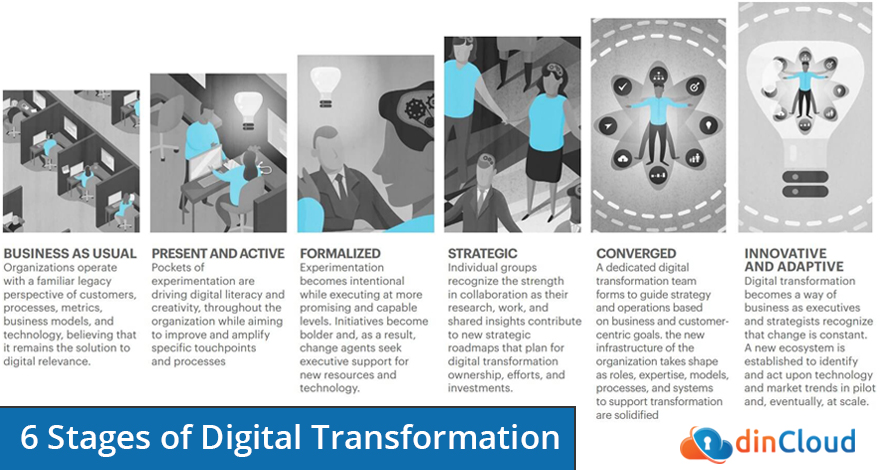In last weeks blog, we defined Digital Transformation as the shift in a business’s organizational activities, processes, competencies, and models to meet the changes and opportunities in digital technologies with present and future shifts in mind. It is a strategic move towards modernizing one’s business both externally and internally and goes beyond just the technology. A move to just modernize systems without the accompanying cultural change is doomed to failure before it even begins. So, what is the state of digital transformation?

Digital Transformation in 2017
A simple Google search will lead you to many different thought leaders on the subject, but one that we found to be of particular interest was the report put out by Altimeter. In it, the research firm surveyed 528 digital transformation leaders. They found both good and bad news. The good being that more companies are embarking on the path towards transformation, and the bad that most companies are actually ignoring the change connected with the changing consumer behaviors. We would go so far as to say that those companies may actually be heading on the path to obsolescence as their competitors embrace these changes and consume more of the market.
The firm found 4 themes in the companies who are struggling with the challenges of digital transformation. They are:
- Lack of digital literacy is holding back the company’s ability to respond to the changing landscape and purchasing behavior of consumers (who are progressively moving to mobile forms of communication, buying and selling, education and entertainment).
- Those who do invest in digital transformation initiatives are viewing the effort as short-term cost centers instead of long-term investments. This results in short-sightedness and limited resources and budgets, keeping the company from seeing the full potential.
- Company cultures are “risk-adverse” and the leadership doesn’t seem to feel the sense of urgency to compete differently.
- Politics, ego, and fear are the main stumbling blocks to obtaining the true collaboration and solidarity needed to make the necessary digital changes.
The report lists 6 Stages of Digital Transformation as you can see in the image below from the firm.

The report puts a “disconcerting number of businesses in the early stages.”
So, what’s a company to do?
True innovation seems to come from the top down. For digital transformation to be successful, it needs to come from key leadership taking the reigns and developing the purpose for the transition. Altimeter’s survey found that fewer than 50% of companies surveyed invest in learning their customers’ and employees’ new desires and behaviors. Organizations cannot continue to exist in the “business as usual” stage when their customers and employees are rapidly adopting mobile devices and online engagement, radically changing not only their expectations but their behavior and preferences.
Highlights of Altimeter’s 2017 State of Digital Transformation report
There were a plethora of intriguing tidbits in the report and we invite you to read it all for yourself on Altimeter’s site here. But we thought we would share a bit from their summary of the highlights of the report.
- Businesses are naming “evolving customer behaviors” as the catalyst for the change, but less than half are investing in understanding their customers.
- The CIO is most likely the one leading the charge, but real success is only going to come from enterprise-wide efforts.
- Lack of digital talent and expertise (31.4%), the belief that digital transformation is a cost center and not an investment (31%) and culture (31%) are the main challenges companies face in the digital transformation effort.
How to move forward
One of the easiest ways to begin to move a company down the path to true digital innovation is by adopting “as-a-service” solutions, as they allow for the rapid deployment across all departments in the enterprise. As most employees already have access to a web-enabled device, Desktop-as-a-Service (DaaS) solutions like dinCloud’s Workspaces, will help solve one aspect of the demand for digital transformation – employee’s desire to work whenever and wherever they want using whatever device they have easy access to. Contact one of our specialists today to get your business started on the path towards a digital transformation.


